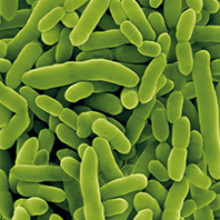16th International Conference on Pseudomonas
13 February 2018

St George’s Hall in Liverpool provided the stunning backdrop for the 16th International Conference on Pseudomonas, held in Liverpool, 5–9 September 2017. This was the first time that the conference had been held in the UK, and the Microbiology Society played a crucial role in making it possible, by sponsoring the event as a Focused Meeting.
The conference brought together more than 300 researchers from all over the world, and the presentations emphasised the importance of Pseudomonas as a versatile and widely used model organism and key pathogen.
The opening lecture by Søren Molin from the Technical University of Denmark emphasised the flexibility of the genus with an insightful overview of the complexity and challenges in Pseudomonas research, and multi-species biofilms with respect to both biotechnology and biomedicine. This brought together investigations of P. putida directed towards biocatalytic applications and studies of P. aeruginosa adaptation during chronic lung infections, with the observation that adaptation can be advantageous for biotechnology but a threat in the clinic.
In the ‘Mechanisms: Signalling, Systems and Synthetic’ theme, there were mechanistic insights into metabolic gene expression regulatory circuits (Victor de Lorenzo and Susanne Fetzner), signalling and communication systems (Jacob Malone and Miguel Cámara), virulence via novel secretion systems (Ina Attree), type VI secretion (Alain Filloux), and the assembly, function and disassembly of the type IV pilus motor (Lori Burrows).
In the ‘Ecology, Evolution and Environment’ theme, we heard about the study of evolutionary biology, gene transfer and adaptation (Mike Brockhurst), analysis of the adaptation of P. aeruginosa during chronic lung infections of cystic fibrosis (CF) patients (Jens Klockgether), and interactions between P. fluorescens and Pedobacter (Mark Silby). We also heard about adaptive and cooperative behaviour in relation to iron acquisition (Ashley Griffin), and the origin and evolution of a kiwifruit pathogen pandemic in New Zealand (Paul Rainey)
‘Infections and Host–Pathogen Interactions’ featured a range of topics including contact lens-associated eye infections (Suzi Fleiszig) and a clinical perspective on therapeutic approaches to the treatment of chronic lung infections of CF patients (Jane Davies). There were also talks on strategies for the treatment of chronic P. aeruginosa wound infections (Kendra Rumbaugh), and the role of type VI secretion as an anti-eukaryotic weapon (Sophie Bleves). Rob Lavigne switched the focus to the interactions between lytic phage and their bacterial hosts.
In the ‘Antibiotics and Biofilms’ theme, we were treated to a highly visual talk on explosive cell lysis (Cynthia Whitchurch) and work highlighting some of the fundamental issues pertaining to the relevance of model systems (Marvin Whiteley), while further talks focused on stress-inducible determinants of antibiotic resistance (Keith Poole), and the use of pyocins as protein antibiotics (Dan Walker).
The subject of ‘Genomics’ was covered with talks by Fiona Brinkman on the latest developments and tools associated with the Pseudomonas Genome Database (pseudomonas.com), and Roger Levesque on progress with the International Pseudomonas Consortium. There was also a crowdsourcing analysis of a mystery Pseudomonas genome, led by Nick Tucker, which ran throughout the conference and beyond.
With 20 excellent offered talks and 230 posters, the action-packed days of excellent science lived up to the grand setting.
Craig Winstanley
University of Liverpool, Liverpool L69 3BX
Image: Coloured scanning electron micrograph of Pseudomonas putida. Dennis Kunkel Microscopy/Science Photo Library.


